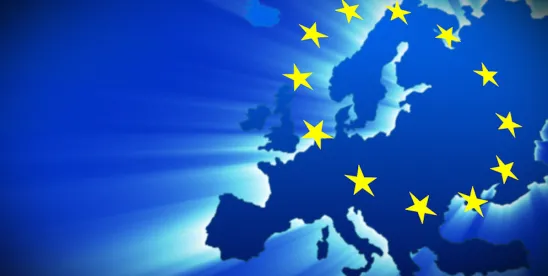Under the leadership of President Trump, the US has adopted a new trade policy that may lead to the adoption of trade measures on imports from the EU. Given the importance of the US/EU trade relationship and the EU’s stated commitment to a free trade environment, the EU has said that it will adopt measures in response to such a US policy. During the election campaign, President Trump spoke of tariffs to re-balance the US economy and replace some tax revenue (i.e. new tariffs as a permanent feature of the trading landscape). The EU’s response may be calibrated according to the purpose of tariffs applied by the US Administration.
In this blog post, we provide an insight into the functioning of perhaps the most assertive (yet so far unused) trade instrument at the EU’s disposal to retaliate, the EU Anti-Coercion Instrument (ACI, available here).
EU Retaliation
Should the EU consider that its interests are impaired by the US measures, it may decide to take retaliatory action against it.
Such retaliatory action is already being announced. On February 11, 2025, following the US announcement of a 25% import tariff on steel and aluminum, EC President Ursula von der Leyen affirmed that the EU would respond to “unjustified tariffs” with “firm and proportionate countermeasures”, and that the EU will act to safeguard its economic interests” (see here).
The EU has different instruments at its disposal for this purpose, including setting retaliatory tariffs on US products, using conventional trade defense instruments or acting under the EU International Procurement Instrument.
The EU ACI is one of the more resolute tools at the EU’s disposal. It is aimed at addressing economic coercion by third countries against the EU or one/several of its member states. So far, the ACI, which was adopted in 2023, has never been used by the EU. Nevertheless, the EU could choose to resort to it, should EU-US relations severely deteriorate.
When Could the EU Resort to the ACI
The ACI can only be resorted to in case of “economic coercion.” This is understood as a situation where a third country applies or threatens to apply a measure affecting trade or investment to make the EU or a member state thereof act (or stop acting) in a particular manner.
Certain circumstances may guide the EU towards an economic coercion finding. This includes the magnitude of trade or investment disruption, the pressure arising from it, the extent of the sovereignty encroachment or whether particular acts are expected from the EU or one/several of its Member States.
EU Examination of Third Country Actions and Omissions
The EC may examine any third country action or omission to evaluate if it constitutes economic coercion. It may do so at its own initiative or if requested to do so (subject to conditions).
Where the EC considers that the third country action or omission constitutes economic coercion, it must submit a proposal to the Council of the European Union (“the Council”, i.e. the EU member states) for an act formally determining that the third country action, or omission constitutes economic coercion. Should it declare economic coercion (by a qualified majority of its members), the Council may also request reparations for the injury to the EU.
Consultants
Next, the EC would request the country in question to immediately cease such economic coercion (as well as to repair any injury, if requested to do so by the Council).
The EC would also seek consultations with the country in question. Options that could be explored in such consultations would include direct negotiations, or the submission of the matter to international adjudication, mediation or conciliation.
Simultaneously, the EC would seek to obtain the cessation of the economic coercion by raising it in international fora, where applicable. It could also collaborate with any country affected by the same or similar economic coercion, for example to coordinate their respective responses.
EU Response Measures
Foreign economic coercion could result in the EC adopting response measures, which may amount to measures of general application (potentially affecting an entire third country, or only specific sectors, regions or companies thereof), or measures targeting specific natural or legal persons.
Substantially, response measures may include:
- Customs duties
- Other import charges
- Import or export restrictions
- Measures on transiting goods
- EU internal measures applying to goods
- The non-performance of international obligations concerning the right to partake in tender procedures
- Measures affecting trade in services (including through EU subsidiaries)
- Measures affecting access to foreign direct investment to the EU (including through EU subsidiaries)
- Restrictions on the protection of intellectual property rights or their commercial exploitation
- Restrictions in access to EU capital markets and other financial service activities
- Restrictions on the possibility of marketing goods subject to EU rules on chemicals
- Restrictions on the possibility of marketing goods subject to the EU sanitary and phytosanitary rules
Response measures should, in any event, be proportionate and not exceed the level of injury to the EU.
The adoption of response measures would, in any event, be subject to three conditions:
- That any request to the third country in question to cease or repair the economic coercion, as well as any consultations and possible further action (such as international adjudication or mediation) has not resulted in the cessation of the economic coercion is a reasonable period of time;
- That the adoption of EU response measures is necessary to protect the interests and rights of the EU, and its member states in the particular case;
- That the adoption of the EU response measures is in the EU interest (including with respect to the ability of the EU and its member states to make legitimate sovereign choices free of economic coercion).
EU response measures are also possible where the economic coercion in question has ceased, but the third country has not repaired in full the injury to the EU, despite having been requested to do so.
After the Imposition of Measures
Upon adoption of response measures, the EC would offer to negotiate a solution with the third country. The entry into force of the measures could be delayed by up to three months following their adoption, extendable where the third country in question would take steps to cease the economic coercion and, where appropriate, repair the injury to the EU.
Once response measures would be applied, the EC would monitor the evolution of the economic coercion – and potentially amend them. Where economic coercion would be suspended, the EC would also suspend the application of the response measures.
The EC would be required to terminate EU response measures when any of the following five situations would arise:
- Where the economic coercion would end, and any requested injury reparation would be carried out;
- Where economic coercion would end without injury reparation (event where requested) – subject to conditions;
- Where a mutually agreed solution would be reached with the third country in question;
- Where a binding decision in relevant international third-party adjudication would require the termination of the restrictive measures;
- Where termination would be appropriate in light of the EU interest.
Response measure termination would be carried out through EC implementing acts. To adopt such implementing acts, the EC would have to follow an examination procedure. As part of that examination procedure, a committee representing EU member states would have to deliver an opinion (adopted through a qualified majority) asking for the measures to be terminated. The EC would be required to follow the committee’s opinion and terminate the measures. Under some circumstances and provided the committee would not deliver an opinion, the commission could also terminate the EU response measures at its own initiative.
How We Can Help
The ACI is at the apex of the EU’s policy arsenal in international economic matters – it is for that reason that is has been referred to as a “bazooka”. While it has never been used so far, a very aggressive trade policy measure against the EU could prompt the EC to at least brandish the ACI as one of the more assertive instruments at its disposal against third countries, including the US or China. Should it ever be triggered, ACI response measures could severely affect trade or financial relations. US goods and services may be directly targeted. At the most extreme end of the spectrum, US trade restriction measures and the EU’s response could combine to alter current patterns of trade across the Atlantic for some time into the future.





 />i
/>i

